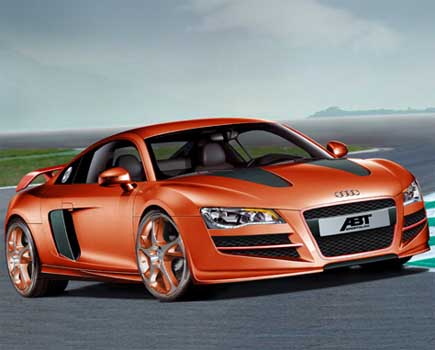
Gordon Murray has long been considered one of the most innovative engineers and designers in the automotive world. The latest project from the mind that created the McLaren F1 supercar is the new T.27 electric city car. The T.27 is the battery powered variant of the T.25, a model that will debut shortly with a gas engine. Both models use the same basic architecture, and like the seminal supercar, they feature a three seat layout. That's largely where the similarities end, however.
Essentially an electric version of the T.25, the T.27 features a 12 kWh lithium-ion battery and a small electric motor with 25 kW (34 hp / 34 PS) and 875 Nm (645 lb-ft) of torque. This allows the car to accelerate from 0-100 km/h in less than 15 seconds, before topping out at 105 km/h (65 mph). While it's not fast, the 680 Kg (1,500 lb) T.27 will have a range of 129-161 kilometers (80-100 miles). More importantly, "projected emissions, using a UK energy mix, are 48g/km CO2 for the combined cycle and 28g/km CO2 for the urban cycle alone, with zero emissions at the point of use. Full lifecycle CO2 damage will be 42% less than the average UK car," according to the press release.
T.27 has a length of 2.50m, width of 1.30m and height of 1.60m, and it offers s wheelbase of 1.78m. The car’s turning circle is 6.0 meters and the weight including the battery is 680Kg.


Press Release
Gordon Murray Design announce the Specification and Performance Targets for the T.27 City Car, a pure electric drive vehicle designed to fully optimise packaging, weight and performance. The announcement marks an exciting leap forward in efficiency for electric vehicles and working closely with their powertrain partner, Zytek Automotive, a brand new, innovative, lightweight and fully integrated electric motor, control system and battery will be designed to ensure that maximum efficiency is achieved.
Projected emissions, using a UK energy mix, are 48g/km CO2 for the combined cycle and 28g/km CO2 for the urban cycle alone, with zero emissions at the point of use. Full lifecycle CO2 damage will be 42% less than the average UK car.
Vehicle Specification
| eMotor: | 25kW | Height: | 1.60m |
| Battery Type: | Li-ion | Weight: | 680Kg (incl. battery) |
| Battery Spec. | 12kWh | Wheel Base: | 1.78m |
| Length: | 2.50m | Turning Circle: | 6.0m |
| Width: | 1.30m |
|
|
Performance Targets
| Top Speed: | 105kph |
| 0-100kph: | Less than 15 seconds |
| Range: | 80 – 100 miles |
The T.27 vehicle concept closely follows the layout and geometry of Gordon Murray Design’s innovative T.25 city car, an MPV with 6 possible internal layouts.
The efficiency in cost, weight and performance comes in part from the ‘clean sheet of paper’ approach, part from the full integration of the powertrain and also from the low energy manufacturing system developed by Gordon Murray Design called iStream®.
iStream® massively reduces the capital investment required to produce the vehicle and also the energy required for manufacture plus the flexibility of the iStream® process would also allow the petrol powered T.25 and the T.27 to be manufactured at the same plant.
The 16 month programme started in November 2009 with a running prototype scheduled for completion in April 2011 and is supported with a 50% investment from the Technology Strategy Board. The next phase in the programme will include a push to secure partners and funding for UK manufacture. A UK partner or consortium to produce the city cars in the UK would keep the technology at home and could create 6,000 jobs.
Professor Gordon Murray, CEO of Gordon Murray Design said:
“The Technology Strategy Board have been incredibly supportive of the T.27 programme and together we are working to keep this in the United Kingdom. It is a great opportunity to work with Zytek Automotive and our other partners on this very exciting programme. We always strive to lead the way in automotive design and our current goal is to maximise efficiency of electric vehicles.”
Bill Gibson, Chairman of Zytek Automotive said:
Zytek’s new innovative powertrain, developed from our substantial experience of EV and hybrid vehicle production programmes, will substantially reduce the weight and cost of the electric engine, whilst delivering the quality, refinement and driving experience that T.27 customers will demand.”
Iain Gray, Chief Executive of the Technology Strategy Board said:
"This is another example of the UK positioning itself to benefit from the economic opportunities offered by the emerging low-carbon vehicles market.It’s great that the T.27, a fantastic example of smart engineering and sustainable design, is at the forefront of this. We are also glad that we were able to support a project that enabled Gordon Murray Design and Zytek Automotive and the other partners to work together to be truly innovative.”



































































